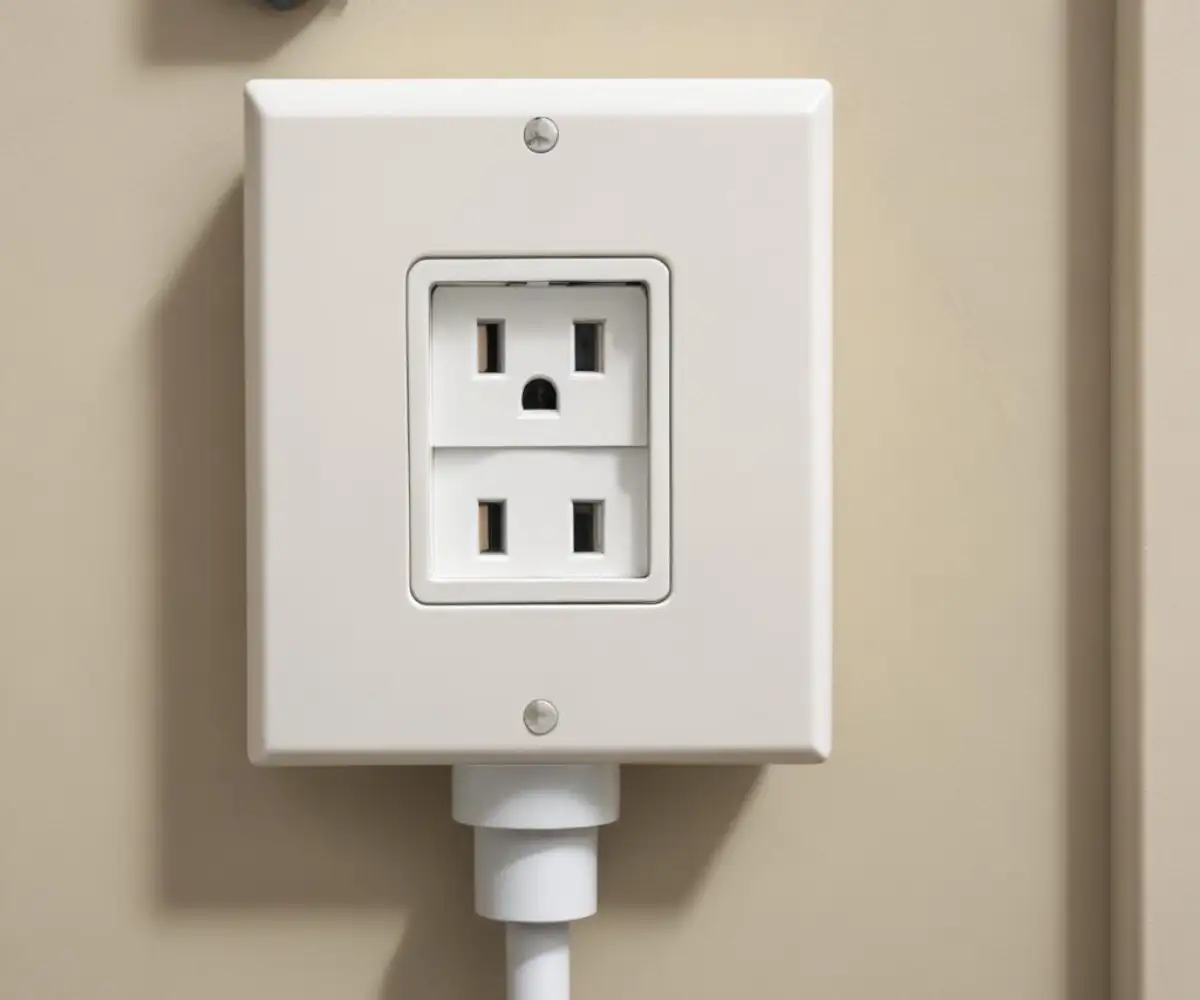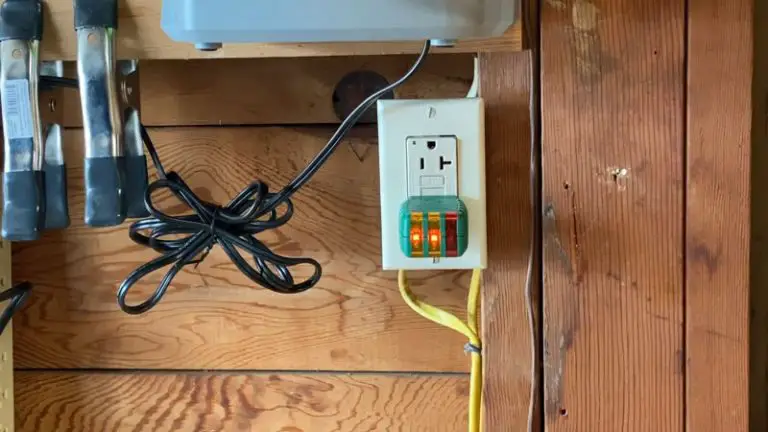Install Electrical Outlet Behind Toilet Cost: This Year Price Guide
Upgrading your bathroom often means adding modern conveniences. One popular and practical upgrade is installing an electrical outlet behind the toilet. This simple addition can power everything from luxury bidet seats and smart toilets to automatic air fresheners.
But what does it really cost to add this functionality to your bathroom? The answer isn’t always straightforward. This guide breaks down the professional installation costs for 2025, explores the factors that influence the price, and helps you budget for this valuable home improvement project.
You'll Learn About
Why Install an Outlet Behind Your Toilet?
The primary driver for this bathroom upgrade is the growing popularity of electronic bidet toilet seats and integrated smart toilets. These fixtures offer features like heated seats, warm water cleansing, and air dryers, all of which require a power source. Relying on an extension cord is not only unsightly but also a significant safety hazard in a wet environment like a bathroom.
A dedicated outlet ensures a safe, clean, and code-compliant installation. For homeowners considering a bathroom remodel or simply looking to enhance their daily comfort, understanding the cost is the first step. Proper bidet outlet installation is crucial for both functionality and safety.
Average Cost to Install a GFCI Outlet Behind a Toilet
On average, homeowners can expect to pay between $150 and $350 to have a professional electrician install a new GFCI outlet behind a toilet. This price range typically includes the cost of labor and materials for a standard installation. However, several factors can cause this price to go up or down significantly.
The total cost is a combination of the electrician’s labor rate, the price of the outlet itself, and any complexities that arise during the installation process. It’s important to get a detailed quote from a qualified electrician before work begins.
Understanding GFCI Protection is Non-Negotiable
Any new outlet installed in a bathroom must be a Ground Fault Circuit Interrupter (GFCI) outlet. The National Electrical Code (NEC) mandates this for all receptacles in wet or damp locations. GFCI outlets are life-saving devices that quickly shut off power if they detect an imbalance in the electrical current, preventing dangerous electrical shocks. This is an absolute requirement for safety near any water source, including a toilet.
The cost of a GFCI outlet itself is slightly higher than a standard outlet, but this is a minor part of the overall project cost. The safety it provides is invaluable. At a minimum, a bathroom must have at least one GFCI-protected outlet.
Key Factors Influencing Installation Costs
The final price you pay will depend on the unique layout and wiring of your home. An electrician will assess these factors to provide an accurate estimate. Here are the primary variables that can impact the total cost.
1. Accessibility and Location
This is one of the biggest cost drivers. The ease with which an electrician can run a new wire from a power source to the new outlet location is critical. If there is an existing outlet on the other side of the wall or a nearby junction box, the job is simpler and less expensive.
However, if wiring needs to be fished through multiple walls, floors, or ceilings, the labor time increases substantially. Installations in homes with concrete or plaster walls will also be more complex and costly than those with standard drywall.

2. Your Home’s Existing Electrical System
The condition of your current wiring and electrical panel plays a significant role. If your home is older and the electrical panel is already at full capacity, a new circuit may be required. Adding a new dedicated circuit is a more involved job that can cost between $250 and $900.
In some cases, the entire electrical panel may need an upgrade to support additional loads, a project that can cost from $850 to $4,000. An electrician will determine if your current system can handle the new outlet safely.
3. Labor Rates and Electrician’s Fees
Electrician labor rates vary by geographic location and experience level. You can expect to pay between $50 and $130 per hour for a licensed electrician. Most electricians also charge a minimum service fee or trip charge, which can range from $100 to $200, to cover their time and travel for smaller jobs.
Because of this minimum fee, it’s often more cost-effective to bundle several small electrical tasks into one visit. If you have other electrical needs, like replacing old outlets or switches, doing them at the same time can provide better value.
4. Permits and Inspections
Depending on your local building codes, you may need a permit to add a new electrical outlet. Electrical permits can cost anywhere from $50 to $350. This ensures the work is done to code and inspected for safety. Your electrician will typically handle the permitting process, and the cost will be included in the overall quote.
Cost Breakdown: DIY vs. Professional Installation
While some homeowners with electrical experience might consider a DIY approach to save on labor costs, working with electricity is inherently dangerous. A mistake can lead to electric shock, fire hazards, or failed inspections. For a project like this, hiring a licensed and insured electrician is strongly recommended.
Here’s a look at what goes into the cost, whether you hire a pro or attempt it yourself.
Professional Installation Cost Breakdown
Hiring a professional ensures the job is done safely and correctly. The peace of mind and guarantee of code compliance are well worth the investment.
| Cost Component | Average Price Range |
|---|---|
| GFCI Outlet Material | $15 – $40 |
| Labor (Electrician’s Hourly Rate & Trip Fee) | $100 – $300 |
| Miscellaneous Materials (Wiring, Box, etc.) | $20 – $50 |
| Permit Fees (If required) | $50 – $350 |
| Estimated Total Professional Cost | $150 – $350+ |
Potential DIY Costs and Risks
For those comfortable with electrical work, the material costs are low. However, you must also account for the tools required and the significant risks involved.
A DIY project might seem cheaper initially, but mistakes can be costly to fix and can create serious safety issues. If you are ever faced with outdated electrical components, it’s always best to consult a professional on tasks such as learning how to remove old metal outlet box components safely.
Getting an Accurate Quote: What to Ask Your Electrician
To avoid surprises, it’s essential to get a detailed, written quote from at least two or three licensed electricians. When you contact them, be prepared to provide as much information as possible.
Provide Clear Project Details
Explain that you want a new, dedicated GFCI outlet installed behind your toilet. Mention the age of your home and the location of your electrical panel if you know it. The more details you provide, the more accurate the initial estimate will be.
Questions to Ask Your Electrician
- Are you licensed and insured?
- Does your quote include all materials, labor, and permit fees?
- How will you run the new wiring?
- Will there be any drywall damage, and are repairs included?
- What is your estimated timeline for the project?
The Bottom Line: Is It Worth the Cost?
For most homeowners, the cost of installing an electrical outlet behind the toilet is a worthwhile investment. It significantly enhances the functionality of your bathroom, adds a touch of modern luxury, and increases your home’s value. The convenience of a bidet seat or smart toilet can be a daily comfort you’ll quickly come to appreciate.
By understanding the factors that influence the price, you can budget effectively for this project. Remember, when dealing with electricity, safety should always be the top priority. Hiring a qualified professional ensures the job is done right, giving you peace of mind and a reliable power source for years to come. While you’re at it, you might even consider other electrical projects, though some, like figuring out how to hang christmas lights outside without outlet solutions, are better left for another day.
Frequently Asked Questions
How much does it cost to install an electrical outlet behind a toilet?
The average cost to install a GFCI outlet, which is required in wet locations like bathrooms, is between $130 and $300. The price can vary depending on the complexity of the installation, your location, and the electrician’s rates. If a new circuit is needed, the cost could be higher.
Why do I need a GFCI outlet behind my toilet?
A Ground Fault Circuit Interrupter (GFCI) outlet is a safety device that protects you from electrical shock in wet areas. The National Electrical Code (NEC) requires GFCI outlets to be installed in all bathrooms to prevent accidents. This is especially important for outlets near a toilet to power devices like bidet seats or smart toilets.
Can I install the outlet myself to save money?
While it may be tempting to DIY, installing a new electrical outlet, especially in a bathroom, is not recommended unless you have extensive electrical experience. Hiring a licensed electrician ensures the installation is done safely and up to code. Incorrect wiring can be a serious fire hazard.
What factors can affect the total cost of installation?
Several factors can influence the final price, including the accessibility of the wiring, the distance to the main electrical panel, and whether new wiring needs to be run. If walls need to be opened up, you may also have additional costs for drywall repair and painting. The electrician’s labor rates, which can range from $50 to $130 per hour, will also be a significant part of the total cost.
Do I need a dedicated circuit for a bidet or smart toilet?
Whether you need a dedicated circuit depends on the power requirements of your bidet or smart toilet and the existing load on your bathroom’s circuit. An electrician can assess your current electrical system to determine if a new, dedicated circuit is necessary to safely power your new appliance. Adding a dedicated circuit will increase the overall installation cost.

